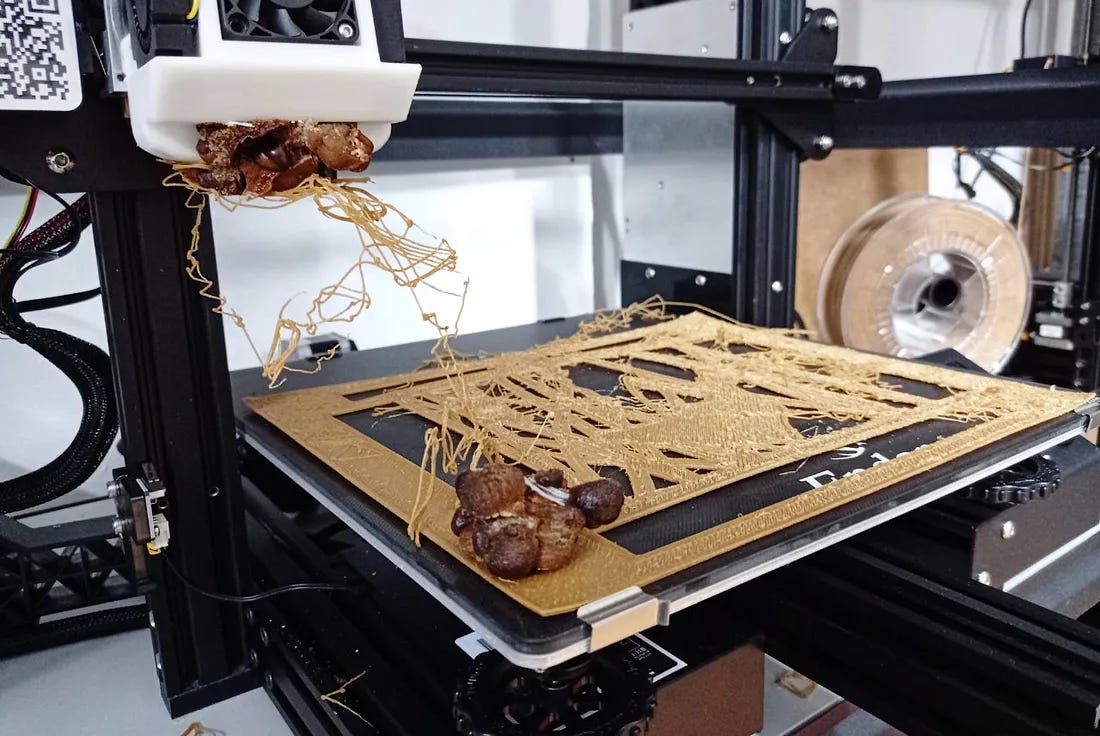Have you also noticed that ecology in 3D printing seems to have like... ended?
AM Survivor #20
You probably remember that just three or four years ago, one of the hottest trends in 3D printing was ecology. Heh, I myself also jumped on that bandwagon...
Yet, everything now suggests that the boom around “eco 3D printing,” driven by the widespread societal obsession with sustainability and ESG, has passed, and the hype around that particular narrative has faded.
Watching the market, you can clearly see this theme cooling down; it’s no longer a hot topic, and the companies that once so fervently promoted themselves on the wave of the green revolution are now silent.
This by no means implies that the previously described environmental advantages of additive technologies have become untrue. On the contrary – they remain just as real and technologically valid as ever.
However, the market and its narratives follow their own rules. The hype cycle around “eco 3D printing” has entered a phase of maturity — and, in some areas, oblivion.
The reasons for this phenomenon are complex and go beyond a simple change in fashion.
First of all, there’s been a sobering up after the initial enthusiasm. Investors and industrial clients began to ask tough questions: yes, 3D printing saves material, but what is the actual, total energy cost of producing this specific part?
Yes, the biodegradable materials are indeed important in terms of sustainability, but are they even durable?
But it’s eco-friendly… Why don’t you order it..?
Yes, it’s possible to print locally — but how economically viable is it to maintain specialized 3D printing facilities compared to global supply chains?
It turned out that the answers weren’t binary, and the green balance often depends on the specific use case rather than on the technology itself.
Secondly, the topic of ecology in industry has been absorbed by a broader, more systemic discourse on sustainability. 3D printing has ceased to be perceived as a separate, miraculous weapon in the fight for the planet and has instead become one of many tools in the sustainability puzzle — alongside circular economy practices, plant-wide energy efficiency, and green logistics.
Thirdly, the market underwent natural selection. Many startups and companies that were founded or rebranded to ride the green wave have simply gone under (I was part of that wave myself!).
Finally, the tech world’s attention has shifted elsewhere. Artificial intelligence and drone manufacturing are now the main magnets attracting investors.
Let’s also not forget that 3D printing, as a somewhat established technology, has lost its “new, shiny toy” status and entered a phase of mature commercialization — where the conversations are with engineers and CFOs, not with marketing departments hunting for catchy stories.
The takeaway here isn’t that the ecological advantages of 3D printing are dead — it’s that they’ve stopped being fashionable.
Technological maturity means that its benefits — including the green ones — stop being a sensation and become simply part of the specification: one of many factors considered when choosing a manufacturing method.
True, deep ecological change is rarely loud or glamorous; it’s usually quiet, systematic, and technically justified.
And that’s exactly how 3D printing continues its silent revolution — building its position not on fleeting hype, but on solid, engineering-based foundations described earlier.
The boom is over — and that’s a good thing, because enthusiasts are being replaced by real engineers and strategists.





